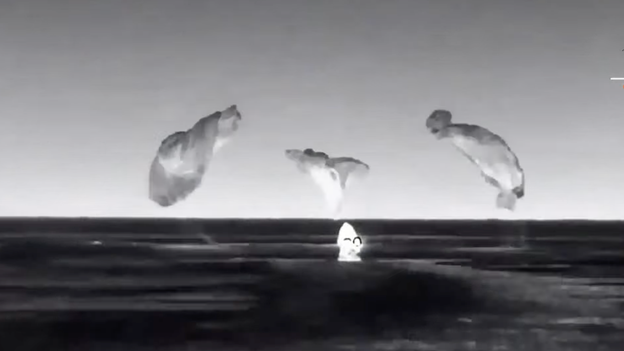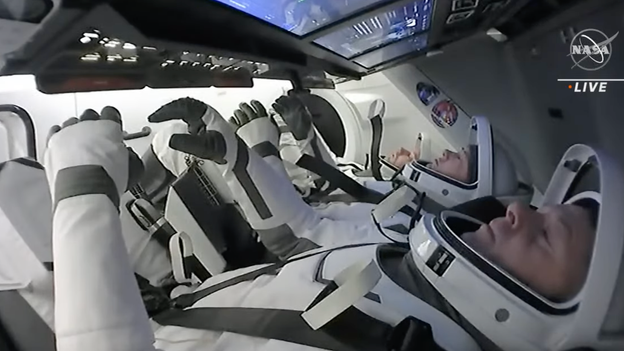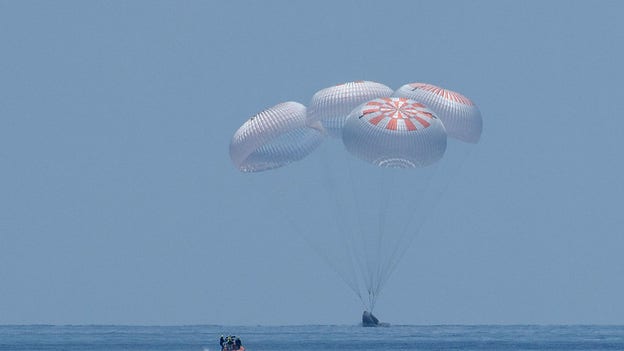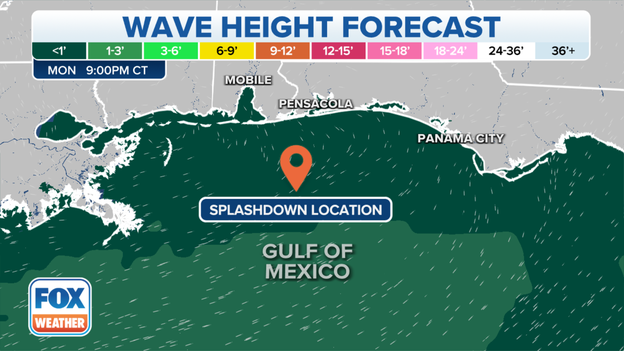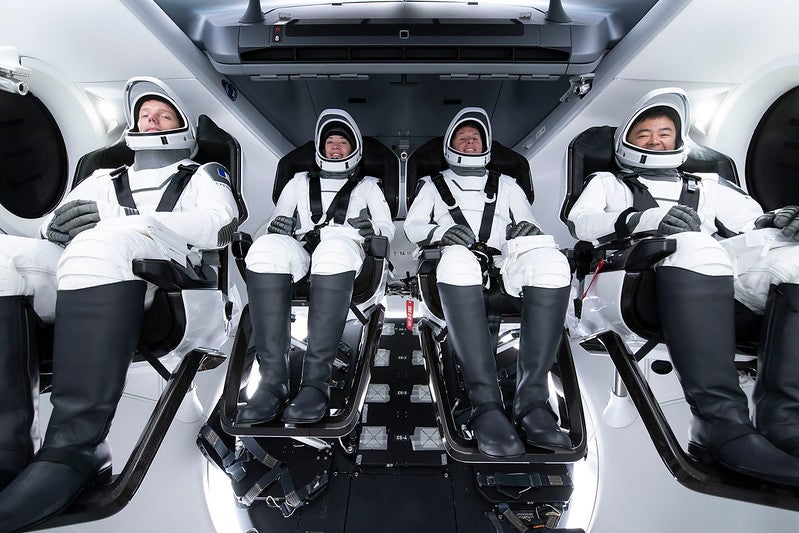LIVE: Crew-2 astronauts splashdown off Florida's coast
After spending almost 200 days in space four astronauts returned to Earth Monday night concluding the Crew-2 mission, the second long-duration human spaceflight with SpaceX's Crew Dragon spacecraft.
Coverage for this event has ended.
Two fast boats quickly arrived at the spacecraft in the water. Next, the Dragon Endeavour will be secured and brought on board the SpaceX recovery vessel, Go Searcher.
Four astronauts are now safely back on Earth after splashing down at 10:33 p.m. ET off the coast of Florida.
"Endeavour, on behalf of SpaceX, welcome back to planet Earth," SpaceX mission control told the crew.
Recovery crews were en route on fast boats to secure the spacecraft.
The main parachutes are out, slowing Dragon down to about 15 mph for splashdown.
After an expected communication blackout. Mission control has once again acquired the spacecraft's signal.
Barreling through Earth’s atmosphere the first set of parachutes called Drogue chutes have deployed on time. This will slow the spacecraft to about 120 mph.
For about 7 minutes, mission control will be unable to communicate with the astronauts in Crew Dragon. This black out is expected. On the other side of the black out, the parachutes will be deployed and landing comes minutes later.
A series of landing events unfold in quick succession. Here's what happens in the last 30 minutes to landing.
Dragon nosecone closes at 9:59 p.m.
Planned signal loss 10:19 p.m.
Entry begins 10:21 p.m.
Signal acquisition 10:26 p.m.
Drogue chutes deploy 10:29 p.m.
Main chutes deploy 10:29 p.m.
Splashdown 10:33 p.m.
"We are in the home stretch."
Dragon is currently completing a deorbit burn from 9:39 to about 9:55 p.m. ET. This kicks off a series of events for landing and is a critical part of today's splashdown.
Dragon will perform a ~40 second phasing burn that lines the spacecraft up with the landing location in the Gulf of Mexico. Everything is still "go" for landing.
As Dragon re-enters Earth's atmosphere it experiences drag slowing the spacecraft. Then at about 18,000 feet, while moving 350 mph, Dragon’s two drogue parachutes deploy and at 6,500 feet the four main parachutes deploy, slowing the spacecraft to about 15 mph for splashdown.
NASA has specific criteria for a successful spacecraft recovery, including wind speed no greater than 15 feet per second and wave height no greater than a 7 degree wave slope.
The weather around the landing site is essential for the astronauts' safety and the recovery teams waiting to pick up the spacecraft in the water.
About two hours before landing conditions off the coast of Pensacola are looking good for landing.
The astronauts who make up the Crew-2 mission are just two hours away from splashing down in the Dragon Endeavour spacecraft off the coast of Pensacola, Florida.
Live Coverage begins here

